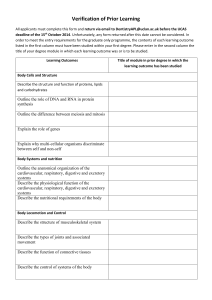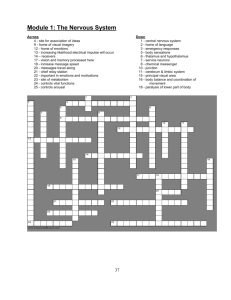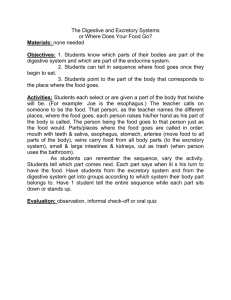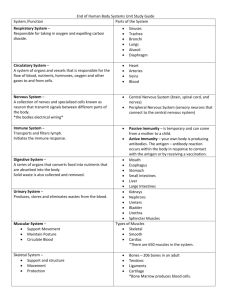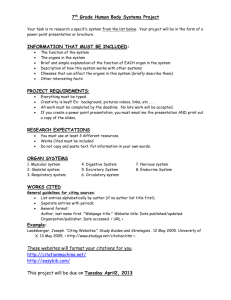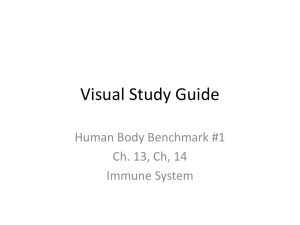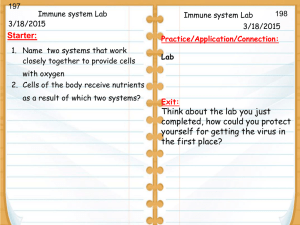Grades 11 and 12 Anatomy and Physiology
advertisement
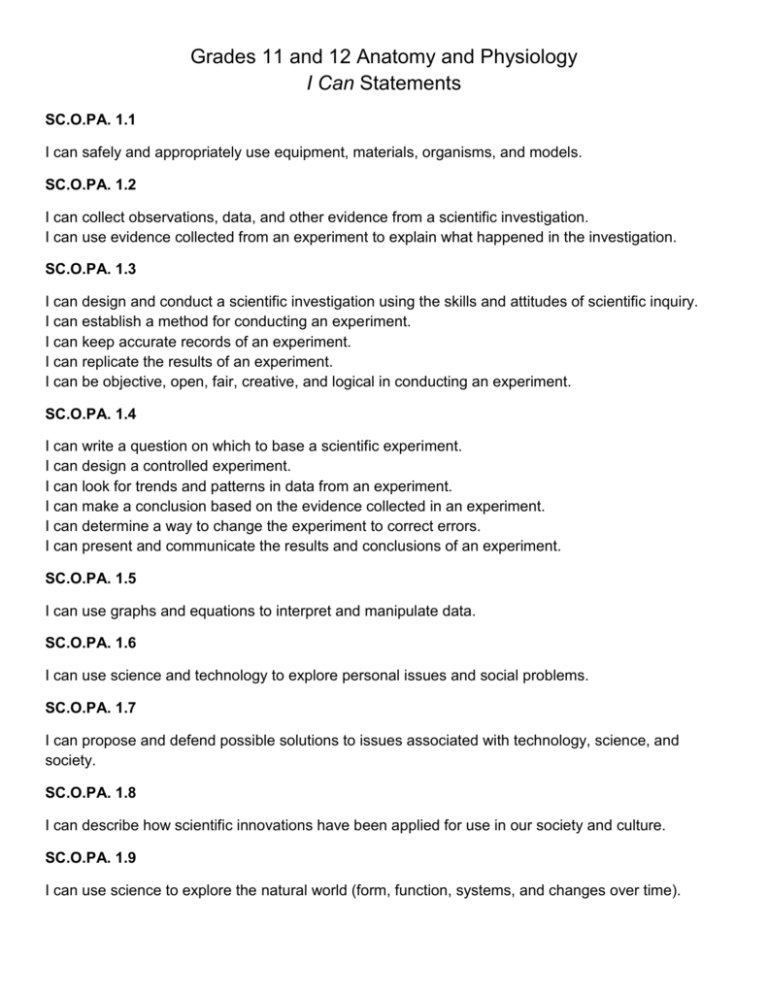
Grades 11 and 12 Anatomy and Physiology I Can Statements SC.O.PA. 1.1 I can safely and appropriately use equipment, materials, organisms, and models. SC.O.PA. 1.2 I can collect observations, data, and other evidence from a scientific investigation. I can use evidence collected from an experiment to explain what happened in the investigation. SC.O.PA. 1.3 I can design and conduct a scientific investigation using the skills and attitudes of scientific inquiry. I can establish a method for conducting an experiment. I can keep accurate records of an experiment. I can replicate the results of an experiment. I can be objective, open, fair, creative, and logical in conducting an experiment. SC.O.PA. 1.4 I can write a question on which to base a scientific experiment. I can design a controlled experiment. I can look for trends and patterns in data from an experiment. I can make a conclusion based on the evidence collected in an experiment. I can determine a way to change the experiment to correct errors. I can present and communicate the results and conclusions of an experiment. SC.O.PA. 1.5 I can use graphs and equations to interpret and manipulate data. SC.O.PA. 1.6 I can use science and technology to explore personal issues and social problems. SC.O.PA. 1.7 I can propose and defend possible solutions to issues associated with technology, science, and society. SC.O.PA. 1.8 I can describe how scientific innovations have been applied for use in our society and culture. SC.O.PA. 1.9 I can use science to explore the natural world (form, function, systems, and changes over time). SC.O.PA. 2.1 I can use the appropriate directional terms to locate human body structures. SC.O.PA. 2.2 I can list the organizational levels in the human body. I can describe how each organizational level in the human body depends on every other level in order to maintain homeostasis in the human body. SC.O.PA. 2.3 I can identify each type of muscle, epithelial, connective, and nerve tissue by structure and function. SC.O.PA. 2.4 I can identify the structure of the integumentary system that functions as a sensory organ, barrier against invaders from the environment, and a temperature regulator. SC.O.PA. 2.5 I can explain how bone tissue is formed. I can explain how bone tissue builds the human skeleton. SC.O.PA. 2.6 I can explain how the structure of the skeletal components (bone, articulations, and insertions) is related to their function. SC.O.PA. 2.7 I can explain what happens at the cellular and molecular level when a muscle contracts. SC.O.PA. 2.8 I can explain how the skeletal, muscular, and nervous systems work together in the human body. SC.O.PA. 2.9 I can identify the major muscle groups and muscles by their location, origin, and insertion. SC.O.PA. 2.10 I can distinguish between sensory and motor neurons by their structure and function. SC.O.PA. 2.11 I can explain how a nerve impulse moves along a neuron at the cellular and molecular levels. SC.O.PA. 2.12 I can identify the parts of the central and peripheral nervous systems. I can identify the function of each part of the central and peripheral nervous systems. SC.O.PA. 2.13 I can identify the structure of the eye and the ear. I can identify the function each structure of the eye and the ear performs. SC.O.PA. 2.14 I can identify the function of specific enzymes. I can identify how each enzyme helps maintain homeostasis in the body. SC.O.PA. 2.15 I can identify the endocrine glands and their hormones by their function in the body. I can identify the effects on the human body that result from hormonal imbalance. SC.O.PA. 16 I can identify the parts of digestive system. I can identify the processes carried out by the digestive system. I can explain how the digestive system supplies nutrients to the body. SC.O.PA. 2.17 I can identify the structures of the respiratory system. I can explain function of each structure of the respiratory system. I can explain how the respiratory system is essential to cellular respiration, gas exchange, and communication with the external environment. SC.O.PA. 2.18 I can identify the parts of the circulatory and lymphatic systems. I can explain how blood assists with transportation of materials to cells. I can explain how blood defends the body against invaders. SC.O.PA. 2.19 I can distinguish the different types of blood cells by structure and function. I can explain how the different types of blood cells are specialized to perform their specific function. I can identify which blood types are compatible with each other. I can explain how blood type compatibility is determined. SC.O.PA. 2.20 I can list the functions of the excretory system. I can explain how the excretory system is essential to maintaining homeostasis in the body. SC.O.PA. 2.21 I can identify the structures and functions of the male and female reproductive systems. I can compare and contrast the structures and functions of the male and female reproductive systems. SC.O.PA. 2.22 I can define spermatogenesis and oogenesis. I can identify the steps of spermatogenesis and oogenesis that produce sperm and ovum cells. I can explain how a zygote forms during fertilization. I can explain the stages of embryo development from a zygote to the birth of a baby. SC.O.PA. 2.23 I can identify the components of the immune system. I can identify the function of each component of the immune system. I can explain how the immune system functions to defend the body. SC.O.PA. 2.24 I can distinguish major disease by their causes, symptoms, prevention, and treatment. Revised June 2010




